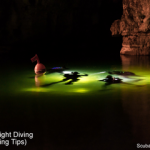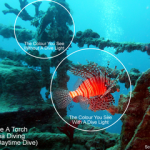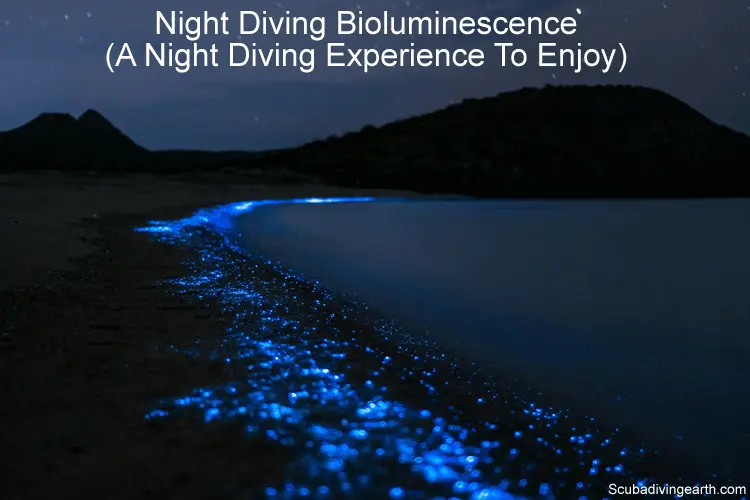
Experiencing bioluminescence whilst night diving is an experience to enjoy
A night diving experience to enjoy is bioluminescence. I’ve included a video that shows bioluminescence below.
Night diving bioluminescence is a phenomenon you experience on a night dive when you switch off your dive torch. Wave your arms in the underwater darkness to see tiny specs of bioluminescence, which is tiny plankton lighting up blue. Scientists are unsure why so many creatures are bioluminescent.
The best way to do more diving is to book yourself on a scuba diving liveaboard. You can check the latest and best deals on liveaboards using the following window:
What is bioluminescence?
If you’re new to the term bioluminescence, bioluminescence is the production and emission of light by a living organism. This phenomenon is used by land and sea creatures.
Bioluminescence is one of natures many amazing wonders. To appreciate the phenomenon you’ll need to take a night dive to see it.
Even scientists are not sure why some animals are bioluminescent. But bioluminescence has been around for almost as long as the oceans themselves.
It’s thought that coral use bioluminescence to protect themselves from the UV sun radiation. Whereas other creatures use it for communication and in some cases other creatures used it as a predatory tool.

Bioluminescent sea creatures
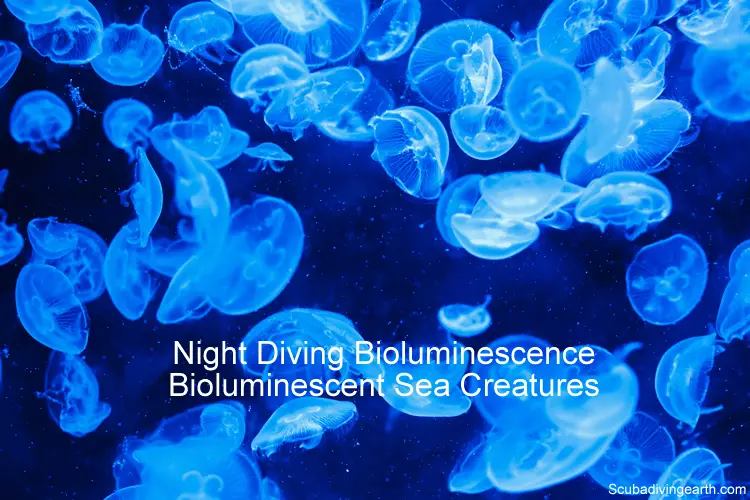
There are a number of sea creatures that emit bioluminescence Most of these are jellyfish and plankton.
But here’s a list of some of the Bioluminescent sea creatures you may encounter on a night dive:
Bioluminescent plankton
The most common and easiest to experience bioluminescent sea creature is plankton. The best way to experience bioluminescent plankton is on a night dive.
At some point on your dive turn your scuba torch off. When your torch is off (make sure your buddies torch is off too), wave your arms around in the water. When you do this the tiny bioluminescent plankton light up blue.
More Reading: Why use a diving torch scuba diving (It’s not just for night diving)
The bioluminescence in plankton results from a light-producing chemical reaction. This is also called chemiluminescence. This simply means the emission of light.
When chemicals are mixed together they produce energy. This is a bit like how a glow-stick does. When you disturb the plankton in this way you ‘excite’ the chemicals caused by vibration. This is what causes them to glow.
Luciferins are the chemicals responsible for making plankton glow. Luciferins are light-emitting compounds. It is these chemicals that are found in organisms that generate bioluminescence.
Luciferins can be found in a wide variety of land and sea creatures. It’s thought the majority of bioluminescence creatures arose independently over the course of evolution.
There are many different types of of Plankton that produce bioluminescence.
Bioluminescent coral
There are many type of coral that are bioluminescent. If you watch the video below, you’ll see just how different a coral reef is at night.
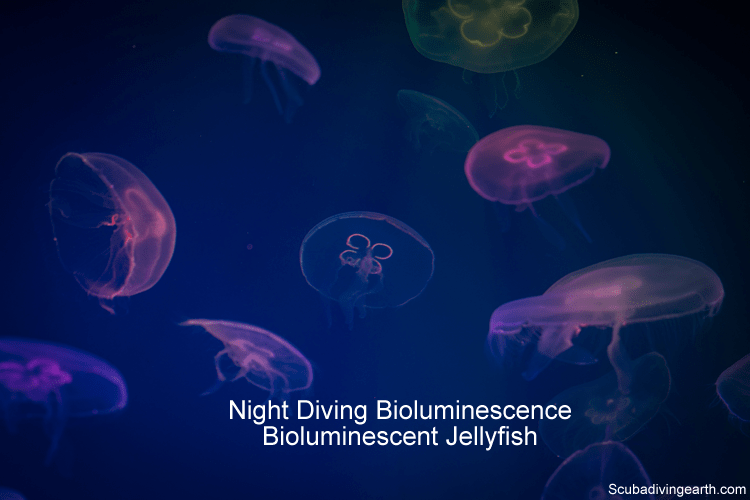
Bioluminescent jellyfish
There are many species of jelly fish that a bioluminescent. These include the ‘Alarm Jellyfish’ and the ‘Crystal Jellyfish.’
Bioluminescent fish
Bioluminescent fish include the barbeled dragonfish, the viperfish and the angler fish. All these fish use the bioluminescence as a lure to catch their prey.
These bioluminescent fish are deep ocean going fish that live in the deep dark depths of the Atlantic Ocean.
By example, the dangling appendage that extends from the head of the anglerfish has a light organ at the end of it. This organ is what’s bioluminescent, which is what attracts small fish to within striking distance.
Bioluminescent squid
Bioluminescence is common among many squid. About two-thirds of all squid species are bioluminescent.
Two types of bioluminescent squid are known to scientists. These include the bigfin reef squid and the Hawaiian bobtail squid.
Both squid can be found in the warm waters around Hawaii. But the bobtail can also be found in the central Pacific Ocean.
Both these squid use their bioluminescence to communicate and for camouflage. The males use their bioluminescence to help protect the female whist it lays its eggs.
One of the ways the bobtail uses its bioluminescence is to camouflage itself from below with the light reflecting down from above.
How does bioluminescence work in sea creatures
Bioluminescent organisms produce the light by an energy release. This energy release is as a result of a chemical reaction, which occurs inside the organism.
If you’ve not scuba dived yet, or if you have dived and have yet been on a night dive, you may have seen a firefly on land. If you have then you’ve experienced a bioluminescent creature.
I’d probably say that bioluminescent creatures are more common in the oceans, rather than on land.
As already mentioned, scientists are still not sure why so many creatures use bioluminescence. Some possible reasons are to warm predators to stay away. Whilst other creatures are the complete opposite and use their bioluminescence to lure or detect their prey. Like the Angler Fish mentioned above.
Other purposes for bioluminescence may include communication. Scientists studying corals conclude that the bioluminescence in corals is used for protection against UV light from the sun.
Video with bioluminescent creatures
Video taken on a night dive on Koh Tao.
“Visions in Blue” won 2 awards in 2013 and 2 in 2014. In Silently, the Short underwater movie festival Belgrade / Nečujno FKPF Beograd it won the Jury Award “Best of Best” and in the FMISM, Festival Mondial de l’Image Sous-Marine the Dimitri Rebikoff Prize for innovation (Prix Dimitri Rebikoff de l’innovation). 3rd place in the category “camera” in the Delfin Fest Underwater Film Festival.
I hope you enjoyed this article about night diving bioluminescence
I’d love to hear from you. Tell us about your adventures of diving and snorkeling, in the comments below. Please also share your photos. Either from your underwater cameras or videos from your waterproof Gopro’s!
If this article hasn’t answered all of your questions. If you have more questions either about snorkeling or scuba diving (or specifically about night diving bioluminescence), please comment below with your questions.
There will also be many more articles about scuba diving (and snorkeling) for you to read and learn about these fabulous sports.
Have fun and be safe!

